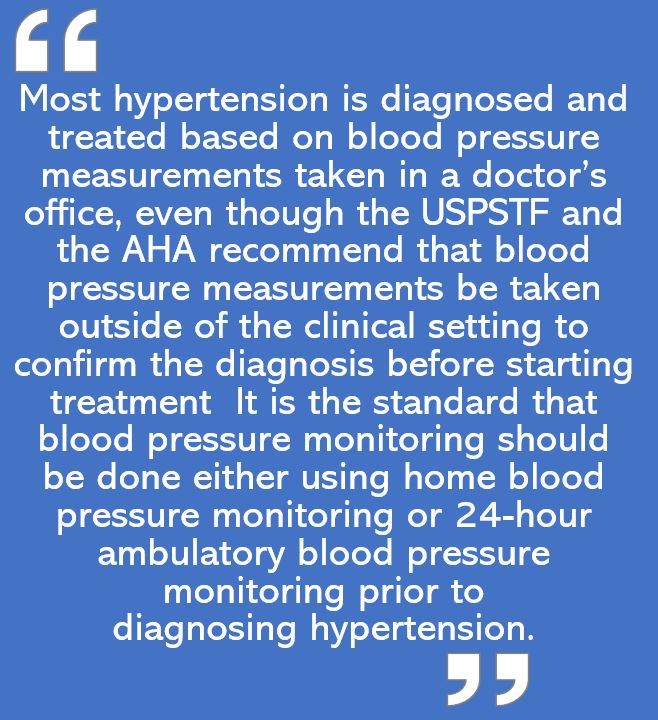- Clinical Technology
- Adult Immunization
- Hepatology
- Pediatric Immunization
- Screening
- Psychiatry
- Allergy
- Women's Health
- Cardiology
- Pediatrics
- Dermatology
- Endocrinology
- Pain Management
- Gastroenterology
- Infectious Disease
- Obesity Medicine
- Rheumatology
- Nephrology
- Neurology
- Pulmonology
For BP Monitoring, Patients Prefer Home over Clinic, Kiosk, or 24-hour Ambulatory
Clinical guidelines recommend home or ambulatory BP monitoring to diagnose hypertension. New research sheds light on what patients prefer and will adhere to.
Among patients with elevated blood pressure (BP) being followed to determine a new diagnosis of hypertension, home monitoring of blood pressure (HMBP) was a more acceptable method to obtain BP readings than using a 24-hour wearable monitoring device or going to a kiosk or a clinic. The findings, from the Blood Pressure Checks for Diagnosing Hypertension (BP-CHECK) trial, were presented at the American Heart Association’s (AHA) Hypertension Scientific Sessions.
BP-CHECK investigators also found adherence with monitoring was better with HMBP than with in-office or kiosk methods and that while adherence with 24-hour ambulatory BP monitoring (ABPM) was similar to HMBP, patients preferred it least of the methods studied.

“Most hypertension is diagnosed and treated based on blood pressure measurements taken in a doctor’s office, even though the US Preventive Services Task Force and the American Heart Association recommend that blood pressure measurements be taken outside of the clinical setting to confirm the diagnosis before starting treatment,” said lead study author Beverly Green, MD, MPH, senior investigator and family physician at Kaiser Permanente Washington Health Research Institute and Kaiser Permanente Washington in Seattle in an AHA press statement. “It is the standard that blood pressure monitoring should be done either using home blood pressure monitoring or 24-hour ambulatory blood pressure monitoring prior to diagnosing hypertension.”
Green and colleagues write that despite guideline recommendations for use of out-of-office measurements to confirm a diagnosis of hypertension, evidence is scarce on patient preference for or the acceptability of different methods. Evaluations to date have been small observational studies and none have compared the measurement methods.
Determining what patients are most comfortable with and willing to use is critical given data from the AHA showing that about 1 of every 2 of US adults had elevated BP or hypertension. More than one in 3 of those whose BP is high may not be aware of it.
BP-CHECK researchers identified 510 study participants from adults presenting to Kaiser Permanente Washington primary care clinics whose BP was elevated but who did not have a hypertension diagnosis. Mean age in the group was 59 years; 80% were white and 50% were men. Mean BP at study entry was 150/88 mm Hg. None were taking BP-lowering medication.
Investigators randomized participants to one of 3 study arms for BP monitoring: office, home, and kiosk. All participants underwent ABPM.
Participants in the 3 study groups completed the following assigned diagnostic regimens over 3 weeks:
- The in-office measurement group was asked to return for at least one additional BP check.
- The HBPM group received and were trained to use home BP machines to take BP twice daily with 2 measurements each time (20 measurements).
- Kiosk group participants were asked to take their BP at a kiosk in their clinic or at a nearby pharmacy on 3 separate days, taking 3 readings each time.
- After completing their regimens, all participants completed 24-hour ABPM monitoring.
A validated questionnaire was used to calculate an overall acceptability score for each method and adherence with each method was calculated as the proportion of participants completing their BP testing protocols.
FINDINGS
Green et al report that overall acceptability score was highest for HBPM (mean 6.2, standard deviation [SD], 0.7) and lowest for ABPM (mean 5.0, SD 1.0). Acceptability scores were intermediate for clinic (5.5, SD 1.1) and kiosk (5.4, SD 1.0) groups, but both scores were higher when compared with APBM. Acceptability was significantly higher for all three intervention arms compared to ABPM.
“Home blood pressure monitoring was the most preferred option because it was convenient, easy to do, did not disturb their daily personal or work routine as much, and was perceived as accurate,” said Green in the statement. On the other hand, she explained, ABPM was reported to disturb daily work activity, disrupt sleep, and to be uncomfortable.
Adherence to the minimum number of BP readings pre-specified in the study protocol was higher for home and clinic groups than for the kiosk group and approximately the same for HBPM and ABPM:
- HBPM, 90.6%
- In-office BP measurement, 87.2%
- Kiosk BP measurement, 67.9%
- 24-hour ABPM, 91%
“Health care professionals should work toward relying less on in-clinic visits to diagnose hypertension and [to] supporting their patients in taking their blood pressure measurements at home,” Green said. “Home blood pressure monitoring is empowering and improves our ability to identify and treat hypertension, and to prevent strokes, heart attacks, heart failure and cardiovascular death.”
The authors note a key study limitation was the nearly all-White makeup of the study cohort, which is not representative of Americans with high BP or hypertension.
Source: Thompson M, Green B, Ehrlich K, et al. Acceptability and adherence to home, kiosk, office blood pressure management compared to 24-hour ambulatory monitoring in primary care. Hypertension. Originally published 27 Aug 2021. https://doi.org/10.1161/hyp.78.suppl_ 1.50Hypertension. 2021;78:A50
